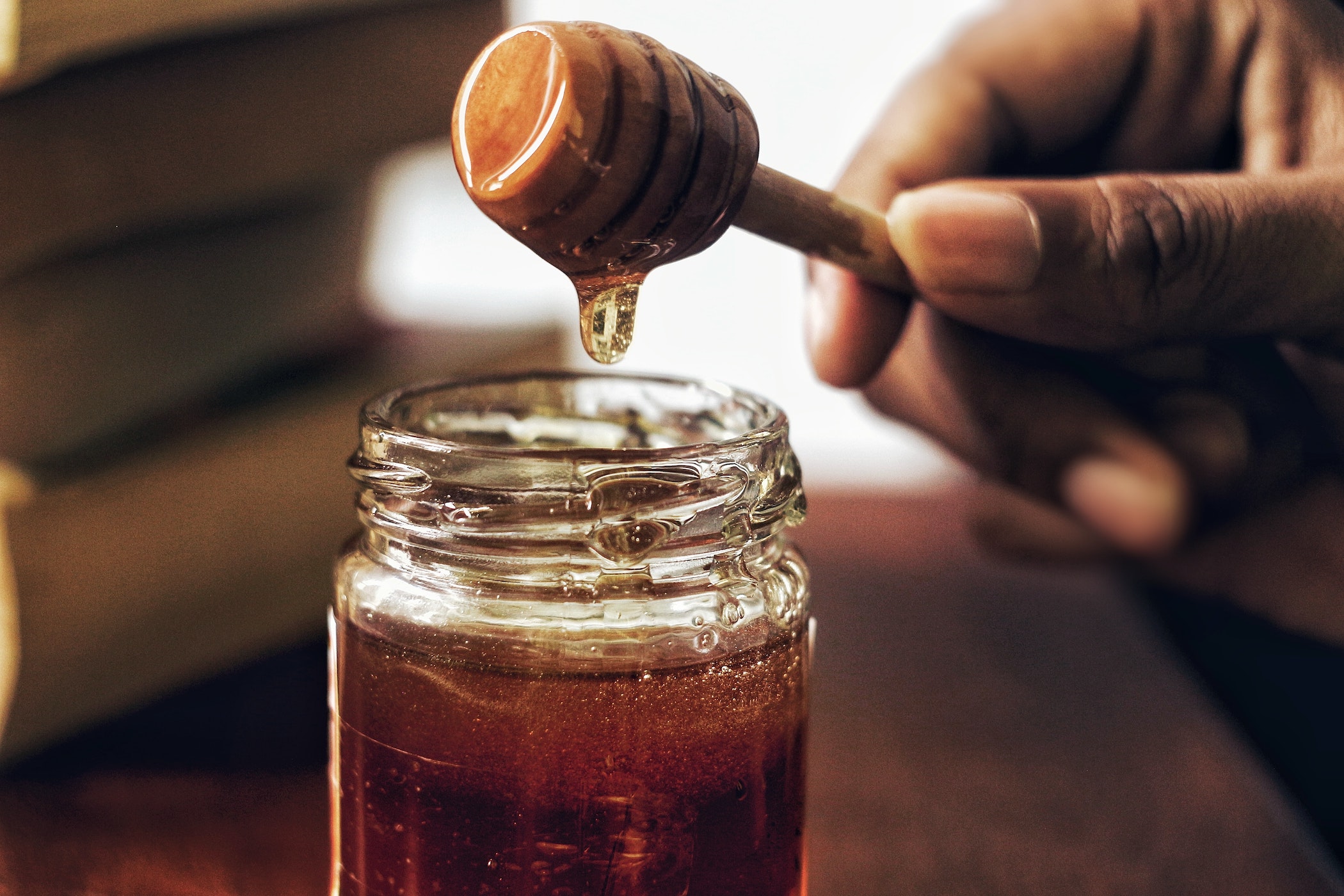Honey is a delicious natural sweeter that can be used in lieu of cane sugar. Of course, the best honey is local honey. But honey bees also provide us with a host of other good things. Below is a description of the most common honey bee products, and you can find a list of Long Island beekeepers who offer many of them here. Our local beekeepers are ready to provide you with the best all natural products, made by Long Island honey bees.
Beeswax: Honey bees have wax-producing glands on the underside of their abdomens. They manipulate this wax to create vertical sheets, or comb, of hexagonal (six-sided) tubes, or cells, that are used to store nectar, pollen, and to raise new bees. Because beeswax has a high melting point (144 to 147 degrees F), it makes for excellent candles that have a “warmer” colored flame and very little visible smoke. Beeswax is also used in natural soaps, lotions, and cosmetics such as lip balm, and as a superior wood polish.
Honey: Honey bees collect nectar from flowers, return to the hive and store it in wax honeycomb to use as a source of carbohydrates. The bees then use their wings to create a strong draft across the honeycomb which evaporates most of the water from the nectar, producing thick, golden, sweet honey. When the nectar has become honey the bees seal it with a wax cap. The bees store honey to use as a source of food during the winter or when nectar is scarce. As long as there is room in the hive, honey bees will store more honey than they will normally need, so beekeepers remove the excess honey and honeycomb. Bottled liquid honey is honey removed from the comb; chunk or comb honey is honey still in the wax honeycomb, straight from the hive.
Warning: Honey should not be fed to infants under one year of age. In rare instances honey can contain a minute quantity of a naturally occurring substance that is harmless to adults but can make children under 12 months ill.
Whipped Honey (also known as creamed honey, spun honey, churned honey, candied honey, and honey fondant): Honey that has been naturally crystallized producing a honey with a smooth, spreadable consistency.
Pollen (also known as bee bread): Honey bees collect pollen from flowers, return to the hive and store it in wax honeycomb to use as a source of protein. Beekeepers place specially designed pollen-traps at the hive entrance; as the pollen-carrying bees enter the hive some of the pollen is collected. Bee pollen is usually sold in bottles and people use it in naturopathic medicine and as a nutritional supplement.
Propolis: Honey bees collect resin from tree buds and sap to create a sticky glue that they use to fill gaps in the hive. Propolis is believed to be effective in the relief of various health problems, including inflammations, viral diseases, ulcers, superficial burns or scalds, and to promote heart health and strengthen the immune system. Some beekeepers believe that a piece of propolis kept in the mouth is a remedy for a sore throat.
Honey bee venom (also known as apitoxin): Worker honey bees have a stinger made to inject a small quantity of venom as a form of self-defense. Bee venom therapy is believed by some to be a treatment for rheumatism and joint diseases due to its anticoagulant and anti-inflammatory properties.








